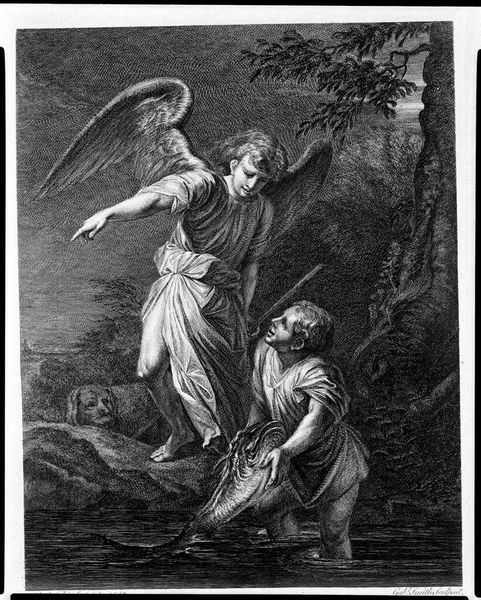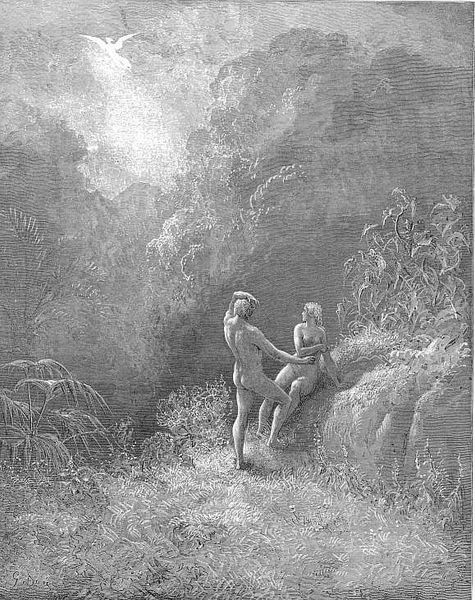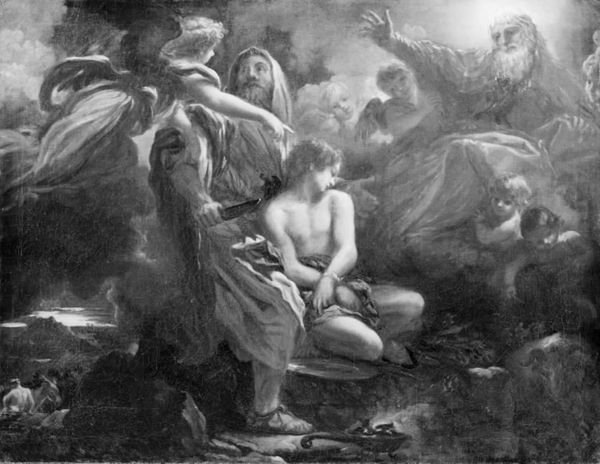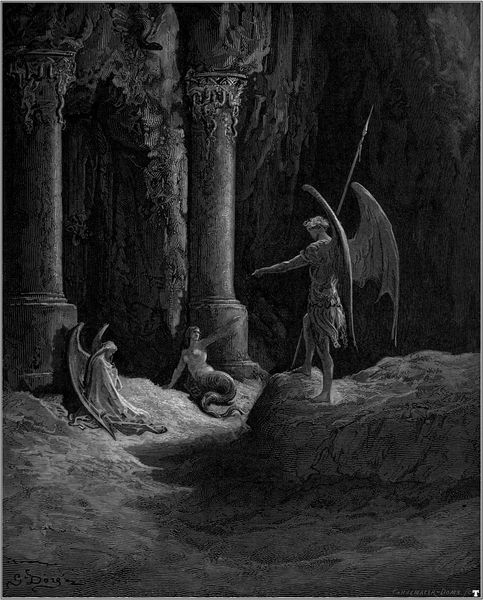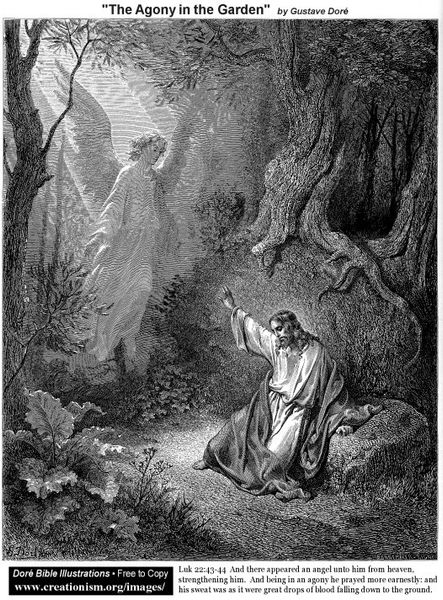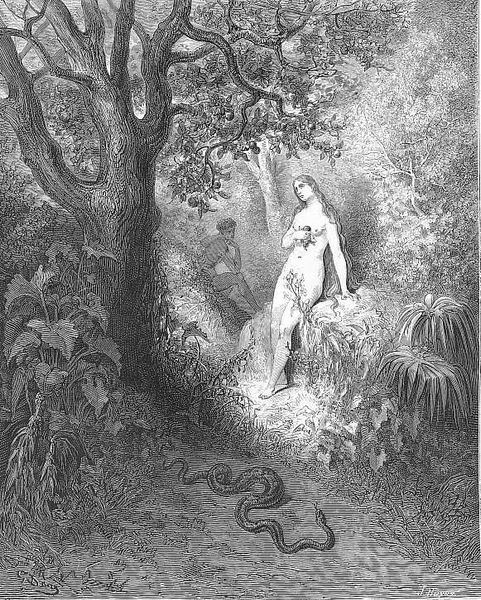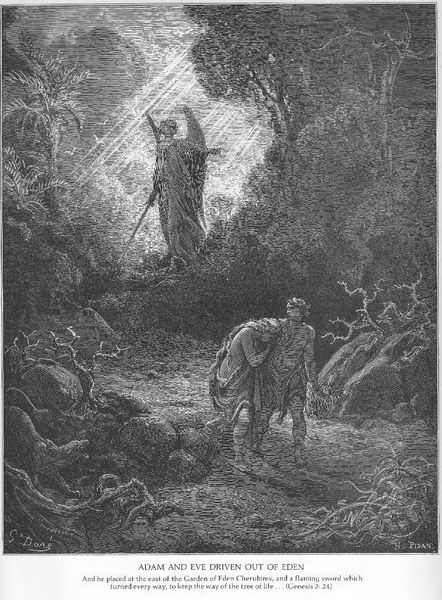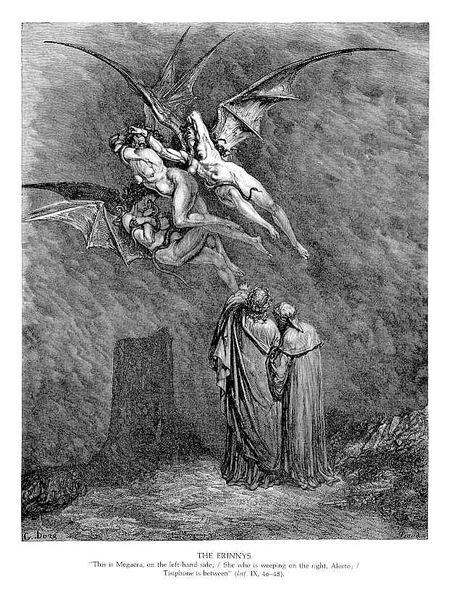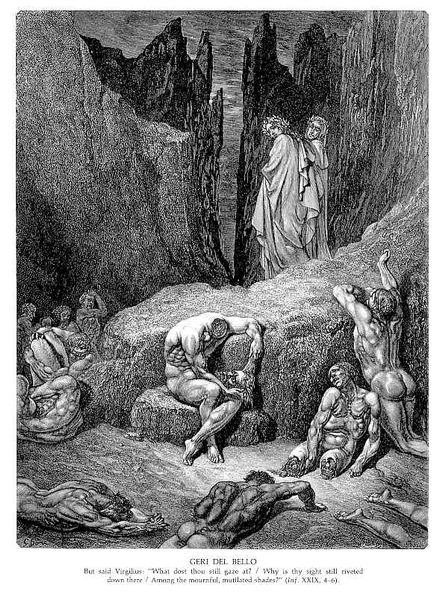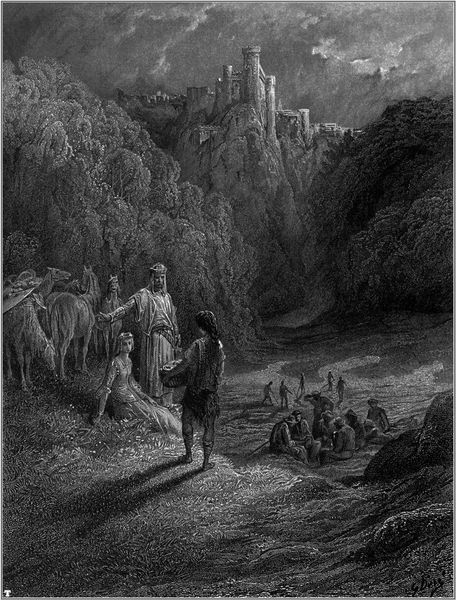
To whom the winged Hierarch replied O Adam, one Almighty is, from whom All things proceed
0:00
0:00
drawing, graphite
#
drawing
#
narrative-art
#
pencil sketch
#
charcoal drawing
#
figuration
#
pencil drawing
#
romanticism
#
mythology
#
graphite
#
graphite
#
fantasy sketch
#
angel
Copyright: Public domain
Editor: This is “To whom the winged Hierarch replied O Adam, one Almighty is, from whom All things proceed,” by Gustave Dore. It seems to be a graphite drawing. The mood is one of...solemn pronouncement, perhaps? What symbolic elements strike you most powerfully? Curator: The angel figure dominates, doesn't it? Its posture, with the raised hand, is not just one of communication but of authority. How do you interpret the contrast between the idealized, almost classical, depiction of Adam and Eve and the dynamic energy of the angel? Consider how Dore uses light and shadow. Editor: I see what you mean. Adam and Eve are static, almost like statues, while the angel seems alive, like a messenger. The contrast emphasizes their different roles, right? It also looks as though it suggests a transition away from the pre-Fall tranquility. Curator: Precisely. Dore draws upon a long history of winged figures symbolizing divine messengers, pulling from both Christian and classical traditions. Think about the use of wings: what emotional or psychological effect do they evoke for you? Do they amplify the authority, or perhaps speak to something more personal? Editor: I suppose the wings suggest both the divine and the capacity to act, to move and intervene. Also, now that you mention the light, the figures are brighter than their surroundings. Curator: And what might that imply, within the visual vocabulary that Dore establishes? Are they being illuminated by something beyond the immediate scene, or are they emanating their own light? It suggests a deeper cultural memory too. Editor: This makes me rethink how I first saw the piece. There's much more than just a simple scene here. Curator: Indeed! Dore weaves together threads of cultural and symbolic weight to create a resonating image. He presents to us archetypes within a theological structure. Hopefully, it's inspired further exploration into symbolism and narrative.
Comments
No comments
Be the first to comment and join the conversation on the ultimate creative platform.

